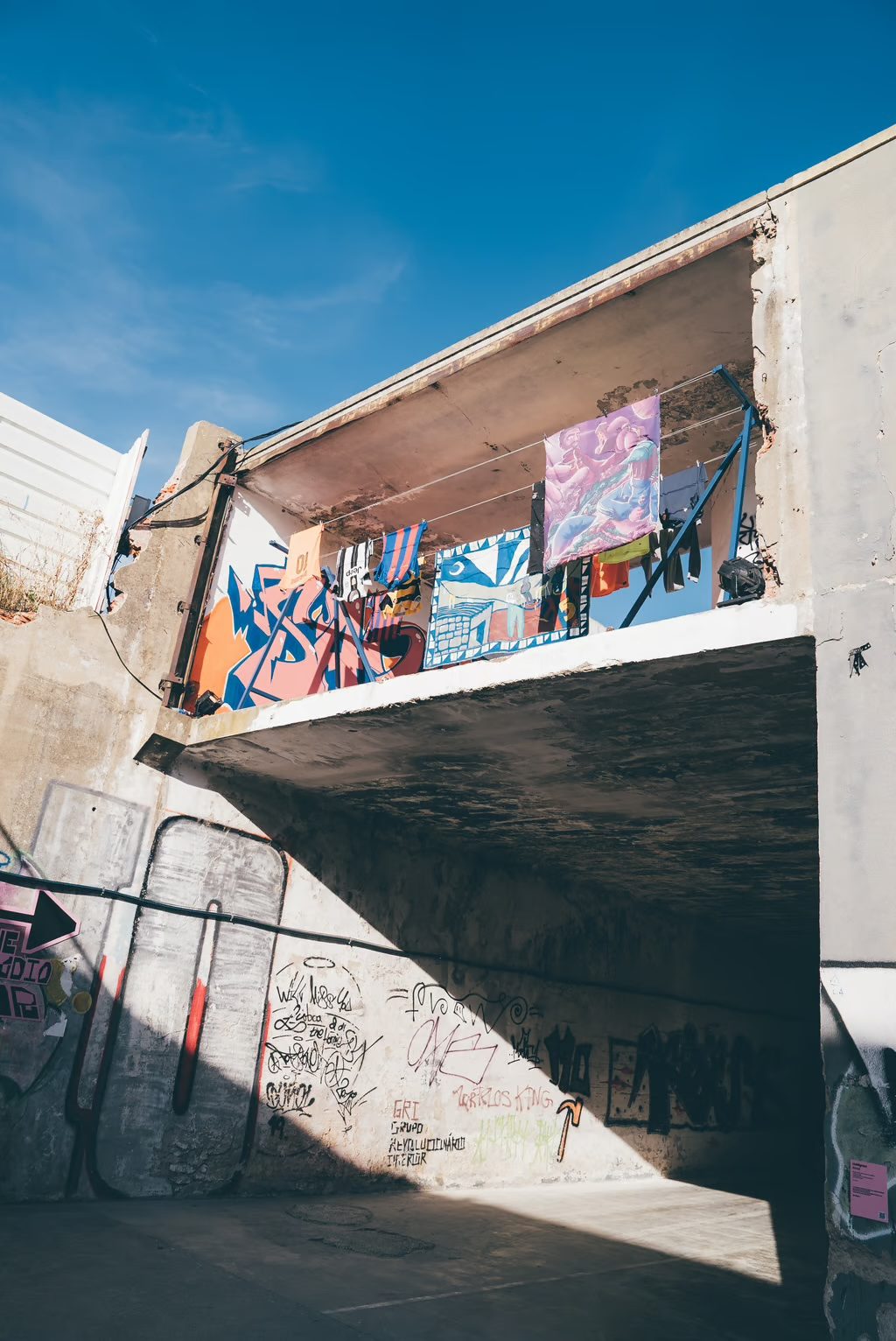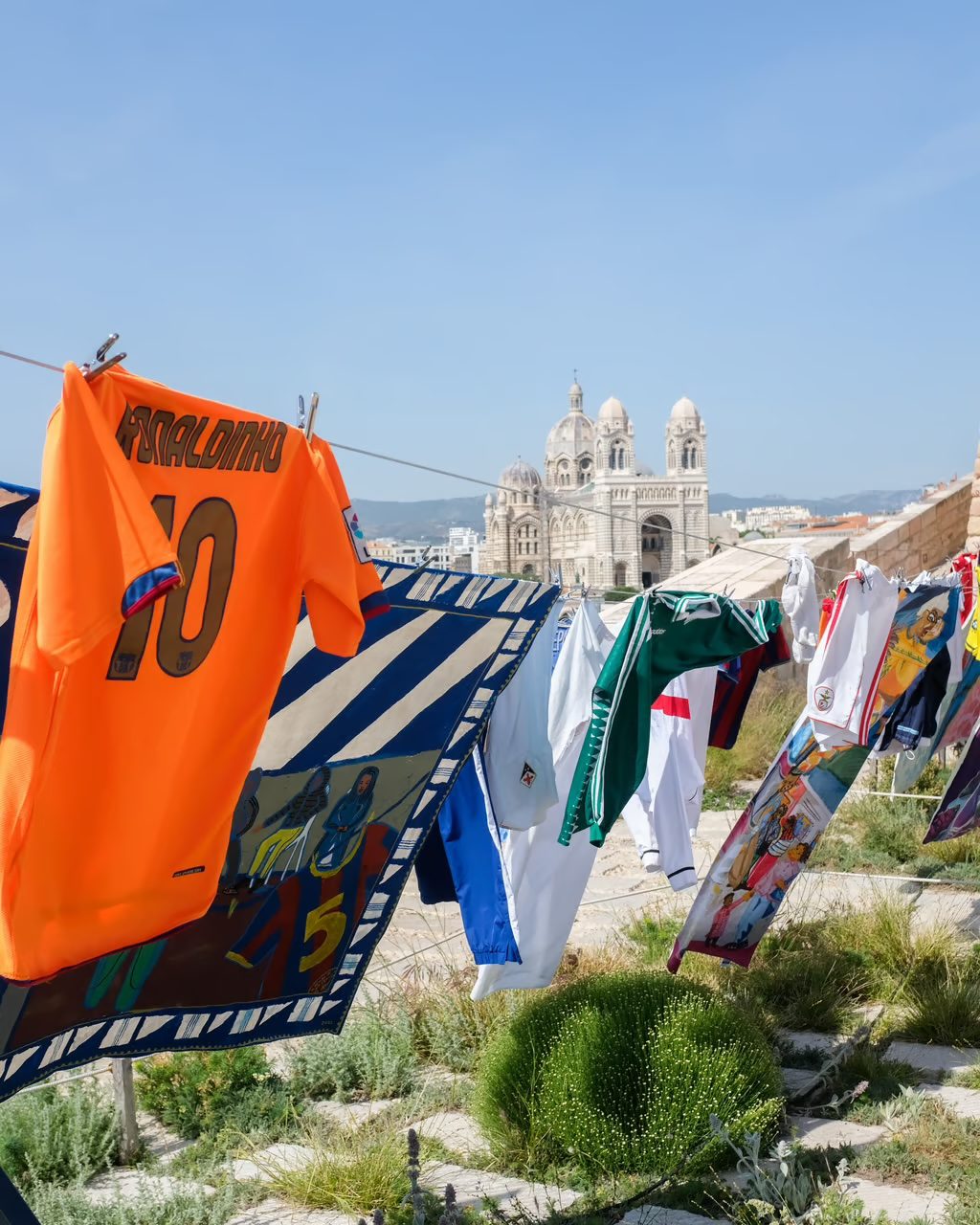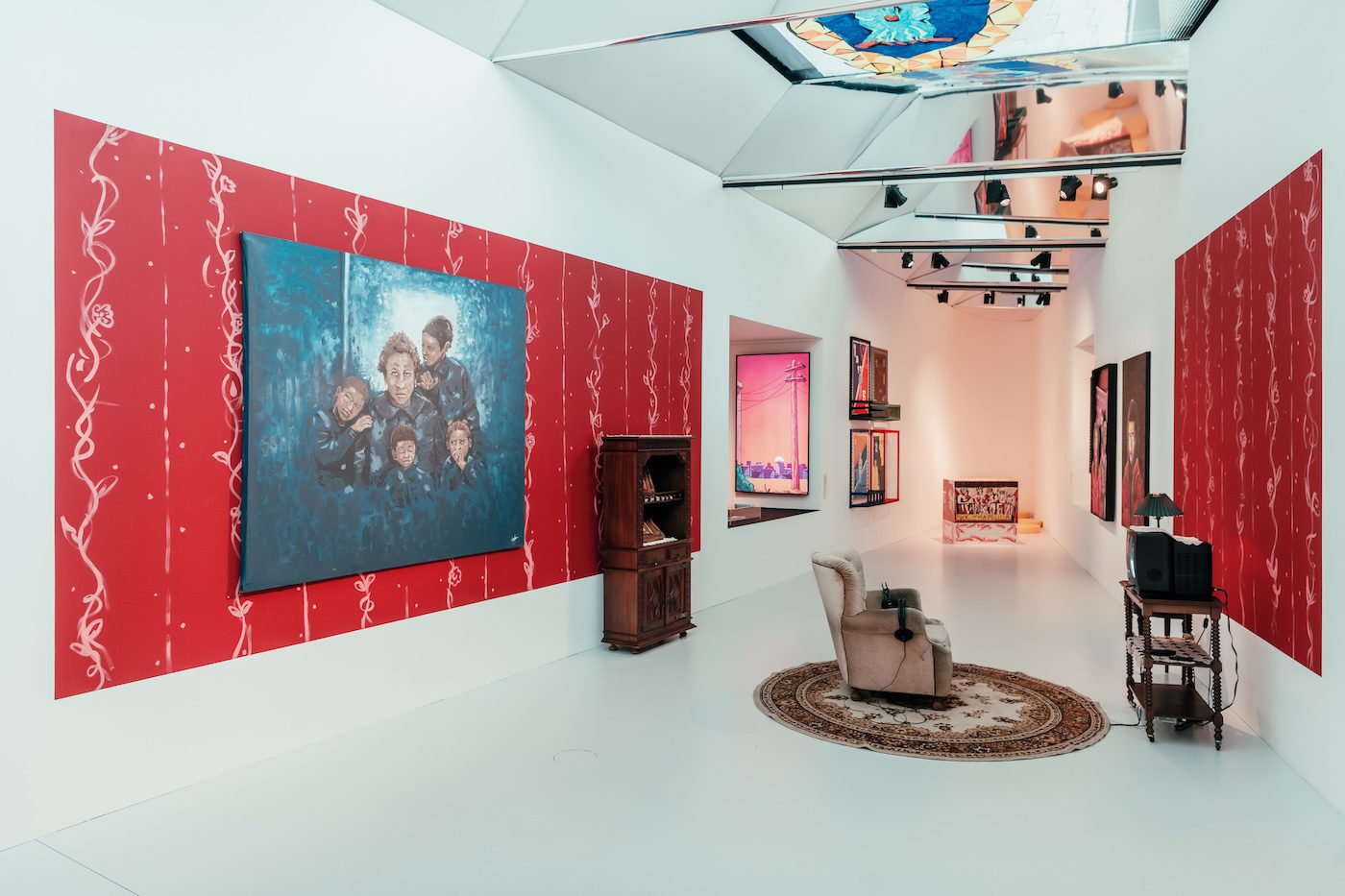The multifacted work of Unidigrazz, rooted in the area of Mem Martins, invites us to revisit domestic scenes as a way to critically reclaim public space.

Unidigrazz, Meia riba kalxa, 2020. Courtesy of the artists. Photo: Chris Costa.
Portugal is home to one the largest Afro-diasporic communities in Europe, related to Lusophone countries such as Cabo Verde, Angola, São Tomé and Príncipe, Guinea-Bissau, and Mozambique. As the original western colonial empire, Portugal set a blueprint for today’s global inequalities. It is this and the persistent crisis the country faces that condition the international visibility of Portugal’s Afro-diasporic community. This series “Afterlives of History” spotlights its artists in all their variety and complexity. Following a portrait of multidisciplinary artist Filipa Bossuet, C& writer Guilherme Vilhena Martins delves into the work of the artist collective Unidigrazz.
“‘Digra” is an attitude based on a blend of struggle and pride, and that attitude is at the core of the Portuguese multidisciplinary artist collective Unidigrazz. Formed by Sepher Awk, Diogo “Gazella” Carvalho, Rappepa Bedju Tempu, Onun Trigueiros, and Tristany in 2017, its regular media spans painting, drawing, music, film, graffiti writing, and design. With one foot on public programming, the collective often works with public entities to tackle wider societal issues. No matter the angle, two connected fundamental questions seem to arise throughout: How many forms can space hold? Can digra be a place?

Unidigrazz, Meia riba kalxa, 2020. Courtesy of the artists. Photo: Chris Costa.
Meia riba kalxa (2020) is a good door into the world of Unidrigrazz. An album signed by Tristany and a series of music videos directed by Gazella and Trigueiros, the project gives an overview of the collective’s work: at times a patient thread of memory and longing, at others an upbeat documentary of travels and current events, soaked in a mesh of musical drifts swinging between slow-paced oneiric melodies and buoyant images that make their way to the foreground. This description applies to the music and the films, and that’s the point.
Mem Martins, where the group is based, always stands out. A parish in the so-called Linha de Sintra, a wider metropolitan area stretching along the railway line connecting Sintra and Lisbon, Mem Martins grew exponentially in the 1970s, pushed by an influx of migration both from the Portuguese countryside and from formerly colonized African countries, such as Angola and Mozambique, following the 1974 Portuguese revolution. Over the years, Linha de Sintra has been officially mistreated as a periphery, a stigma reflected in lack of public investment, especially in the cultural sector.

Unidigrazz in their own jerseys. Courtesy of the artists.
But what is a center the center of, anyway? And what does “peripheral” suggest if not that recentering is urgent? Either way, an infrastructural and institutional void means structures must be built. At least that’s how Unidigrazz responds to these questions – while continuing to raise them. The collective seeks to create a platform that young people and artists come across, and it has reached out over the years to public entities in the area, ultimately collaborating with the parish of Algueirão-Mem Martins and Sintra municipality.
Nowadays their studio is in a public building and used as both workspace and meeting point. Unidigrazz has its own room, where projects are outlined and sketched across a white wall, with notes about places and events mixing with new ideas. People are always circulating in the other areas, along with the members themselves, who mingle and work in this flux. On a normal day, it might be the case that Awk or Trigueiros are working on their drawings in the studio while Tristany is discussing his latest music video with Gazella in the living room – until someone comes around and changes the tone.

Unidigrazz, Kintal, 2022. Installation view at Festival Iminente at MuCEM (Musée des Civilisations de l’Europe et de la Méditerranée) in Marseille, France. Courtesy of the artists. Photo: Chris Costa.
Conviviality is not only simply another part of the process. It also makes its way into the works themselves. Kintal (2022) – “courtyard” in Portuguese – is a great example. An installation consisting of a mix of football jerseys, clothes, and painted textiles hanging from multiple aluminum wires, it alludes to a domestic space that is often also used for hanging out. Familiarity here is not just about recognition or coziness, but an invitation.
Proposals to revisit domestic scenes are recurrent in Unidigrazz, and this is where their critical scope most visibly comes to the surface. When displaced into an installation, familiarity enables a look from outside the realm of utility, taking along a sketch of domestic. It is this poetical reframing that makes way for space to be re-instantiated, a strategy that resonates with an idea Judith Butler presents in “Notes Toward a Performative Act Theory of Assembly” (2018), whereby the – mostly performative – act of making visible can be a means of reclaiming public space.

Unidigrazz, Kubico, 2022. Installation view at Museu de Arte, Arquitetura e Tecnologia (MAAT) in Lisbon, Portugal. Courtesy of Unidigrazz.
Kubico (2022), or “room”/“home,” is another good example. A multimedia installation reenacting a living room, the set is dotted by a collection of works spanning painting, drawing, photography, and video depicting scenes inspired by Linha de Sintra. The motifs are mostly young people wearing sports clothes in bright, vivid color palettes against dense, opaque landscapes, at times leaning towards abstraction.
It is also worth mentioning that while some of the works are signed by the collective itself, others are signed individually, underscoring Unidigrazz’s priority of socialization and collaboration over authorship. A fluidity in the group makes space for permeability. This is key, for it is the permeability of forms that sustains the multiplicity of perspectives that their practice as a collective unifies. Isn’t that what a place is about?
unidigrazz.com/@unidigrazz
Guilherme Vilhena Martins is a writer and curator interested in artistic practice as a form of discussion. He has published two books, written reviews, chronicles, and essays for magazines in Portuguese and English, and curated exhibitions in Portugal and Germany. @gvilhenamartins / gvilhenamartins.com
„AFTERLIVES OF HISTORY"
More Editorial